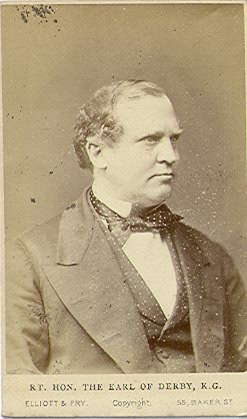Enter your email address below to follow this website and receive notifications of new posts by email:
More Preston plans and maps here
Fishergate in the later 17th century based on a plan at Lancashire Archives (DDX194/9). The plan identifies inns and taverns, barns and other buildings as well as indicating which properties extend to more than two storeys. The numbers are the ones on the annotated plan and relate to the list below. Note: DDX194/9 is an attempt at a visualisation based on original survey documents. Its accuracy is uncertain, but it does provide a feel for the townscape in 1685 (see The 1685 Survey of Preston for a detailed discussion of the 17th-century plans).
List of property owners
Spelling of names as in original Lancashire Archive documents: be aware of possible transcription errors.
294: Wm Blackleach 295: Wm Shaw 296: Wm Hepson 297: El Turnley 298: Roger Welithman – innkeeper at the Holy Lamb 299: Wm Darron 300: Rd Clarkson 301: Wm Wilson 302: Danl Chaddock 303: Jno Burton 304: Tho Greenfeild 305: Geo Piggott esq – father or brother of Robert Piggott 306: Jno Lack 307: Isabel Tasker 308: Rt Dunderdale 309: Edw Hilshaw 310: Roger Santer 311: Hugh Shaddock 312: Geo Burchhill 313: Isaac Salsbury 314: Wm Mellin 315: Tho Bickerstaffe 316: Wm Blakeleach 317: Hen Wamsley 318: James Sorbutts 319: Grace Warding 320: Rd Bratherton chi[?] 321: Wm Bratherton 322: Alex Swansey – innkeeper at the White Horse 323: Rt Carr – innkeeper at the Wheat Sheaf 324: Widow Blackhurst 325: Isabel Boudell 326: Sarah Kendall 327: James Langton 328: John Key 329: x Nowell – grocer 330: Sir John Molenex – four-storey property 331: Tho Winkley 332: Geo Addison – four-storey property 333: Tho Warden 334: Jno Lee 335: Wm Lemon 336: Jno Ferreys esq 337: Wm Bradley 338: Jno Warden 339: Wm Greenough 340: ? ? 341: Roger Sudell 342: Mary Halstead
A selection of some of the other items on this site
Subjects

Does the district known as Little Ireland that was firmly established in Preston by the middle of the 19th century qualify as a ‘ghetto’? It was home to Irish immigrants attracted by the town’s employment opportunities and driven by the famine that was devastating their country. See Irish ‘ghettoes’ in 19th-century Preston

When the 1871 census seemed to show just how much land was held in so few hands the Radicals were jubilant. The Conservative Earl of Derby was prodded to stand up in the House of Lords to demand a recount by way of a government survey. The result showed who owned most of the land in Lancashire. See Who owned Lancashire?

Desirable Dwellings
– Nigel Morgan’s ‘lost book’: the best guide to middle-class housing in Victorian Preston and a detailed source for the social history of the town. Rediscovered only very recently. See Desirable Dwellings – Nigel Morgan’s ‘lost book’

Why did so very few conscripts from Preston’s working-class districts find a place in the officer’s mess, and what does it say about the class divide in Edwardian Preston? See Great War conscription and Edwardian Preston’s ‘class ceiling’
.
More articles
People

The diaries of Thomas Bellingham (above) and Lawrence Rawstorne open a window on life in 17th-century Preston, and reveal the web of family and social connections that enabled the gentry to govern Lancashire. See Bellingham/Rawstorne diaries

From the back streets of Preston to the back streets of Farnworth by way of Cambridge and headship of Rivington Grammar School, the life of Septimus Tebay is a remarkable story of clogs to clogs in one generation. See Septimus Tebay — maths prodigy

A number of Catholic priests from Preston volunteered to serve as army chaplains in the Great War. They included Fr Bernard Page who saw service on the Western Front and in revolutionary Russia. Clerics in khaki

Alexander Rigby, one of the key figures in the Civil War in Lancashire, never let principles get in the way of a good deal: he was ‘never knowne to bee worth one [thousand] till hee became a publicke robber by law: but you must remember hee had beene a lawyer and a bad one.’ Alexander Rigby and his family.
More biographies
Places

Kim Travis has traced the history of the Tulketh district of Preston and its hall from pre-Norman times up to the present day. It is a marvelously detailed reconstruction. See Tulketh and its hall.

One of the foulest of the many obnoxious trades of Victorian England was the tanning of leather. The Dixon family of Bank Parade, Avenham, developed Preston’s largest tannery on their own doorstep. See Frenchwood Tannery.

Preston’s claim to have created Britain’s first public park with the opening of Moor Park in the first half of the 19th-century was, some years ago, called into question by a leading academic. Was he right? Preston’s first park.

Bow Lane, the Preston address of Lancashire Archives, was earlier named Spring Street. Even earlier it had a somewhat indecorous name. See Stand Prick Lane.
More of Preston’s historic places
Maps and Plans

Preston Market Square in the later 17th century. Find this and other plans of the town at that date here.

A plan of the route to Inglewhite from Ribbleton in the later 17th century. More Lancashire road plans here.

Plan of Preston in 1774 showing the holdings of the principal landowners. The 1774 Preston survey.

Map shows what the road network round Preston might have looked like in the late 11th century. Note no Walton bridge. Preston after Domesday

